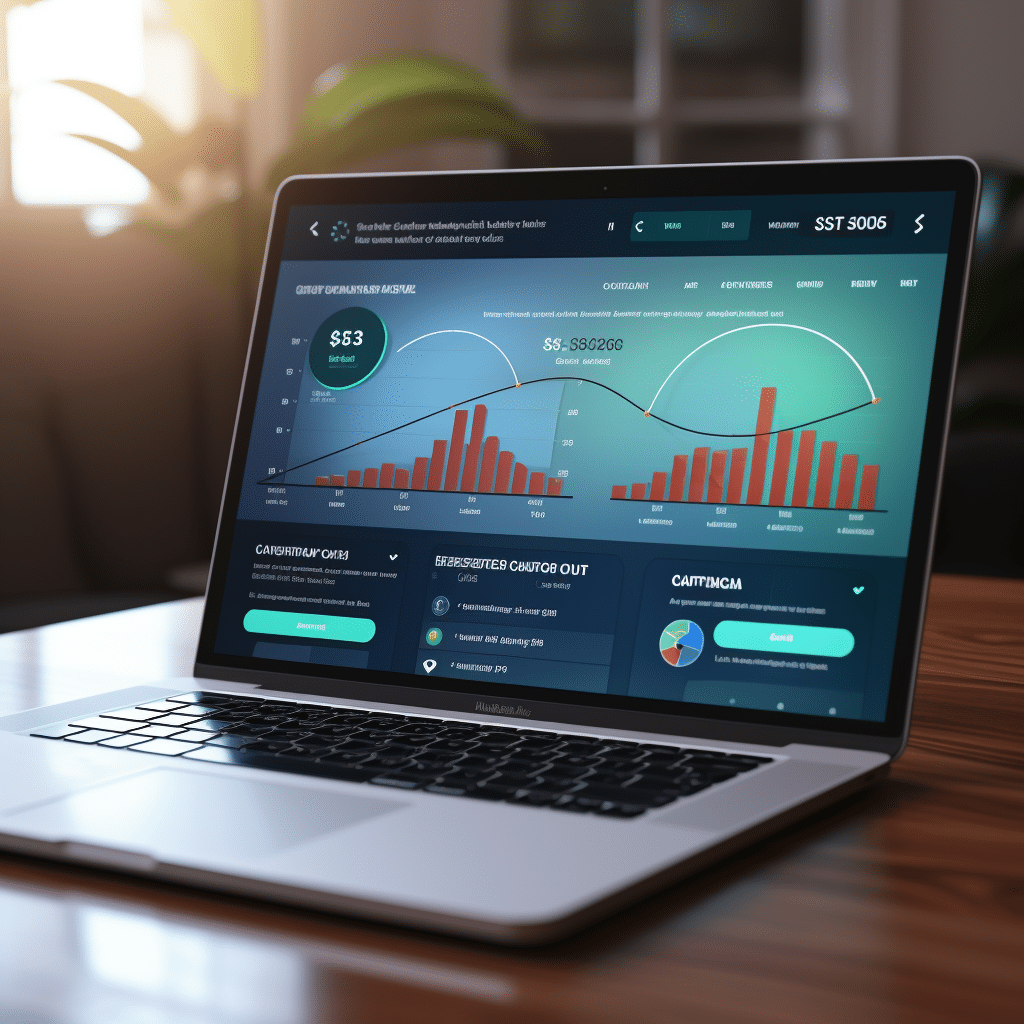The journey to financial well-being is often marked by numbers and scores that seem to define our purchasing power and borrowing ability. Among these, the credit score reigns supreme – a small figure, casting a long shadow over our economic lives. Let’s dig into the very foundations of credit scores, stripping away the mystery to grasp the meaning of the elusive figures and especially, understanding what is the lowest credit score you can have.

Understanding What the Lowest Credit Score Really Means
In the realm of personal finance, credit scores are akin to a financial report card. These scores range broadly from 300 to 850, representing a profile of creditworthiness that lenders use to decide whether or not to extend you credit, and at what terms. Really, it’s a snapshot of risk, depicting to lenders just how cozy, or perilous, it is to let their money take a walk with you.
Credit scores are more than just digits; they’re your financial heartbeat, pulsating through every application for mortgages, car loans, or credit cards. Why’s that? Because no lender enjoys playing hide and seek with their money. A higher score is like a beacon of trust, signaling that you’re good for the money, while lower scores… well, they can complicate the conversation.

Unveiling the Mystery: What Is the Lowest Credit Score Possible?
You might be surprised to find out the lowest credit score possible is 300 – certainly, a number you don’t want to take home to meet the parents. But take a breath; it’s pretty rare to hit rock-bottom here. This absolute low is the credit world’s version of the Mariana Trench – deep, dark, and relatively unexplored.
Landing at this lowest credit score can be due to a combination of financial blunders: missed payments, defaults, bankruptcies, you name it. It’s the ‘perfect storm’ of credit mayhem, and navigating out isn’t a walk in the park. For those with scores lingering at the basement level, borrowing can be akin to scaling Everest – possible, but arduous and fraught with high stakes.

| **Factor** | **Details** |
|---|---|
| Lowest Possible Credit Score | 300 |
| Range for Base FICO® Scores | 300 to 850 |
| Range for Industry-Specific Scores | 250 to 900 (auto scores and bankcard scores) |
| General Credit Score Categories | – Poor: 300 – 579 – Fair: 580 – 669 – Good: 670 – 739 – Very Good: 740 – 799 – Excellent: 800 – 850 |
| Unlikelihood of Having the Lowest Score | While 300 is the lowest score, it’s rare for individuals to reach it. Most with poor credit still have scores above 300. |
| Biggest Factor Affecting Scores | Payment history is the most significant factor in calculating a credit score. |
| Date of Information | July 20, 2023 and August 1, 2023 |
Is a 580 Credit Score at the Bottom? Demystifying the Numbers
A 580 credit score sits in a peculiar spot. It’s far from the depths of 300, yet it doesn’t bask in the sunlight of ‘excellent,’ ‘good,’ or sometimes even ‘fair’ credit. It’s often pegged as the threshold for high-risk borrowers, sometimes the lowest a lender will go.
Here’s the aha moment for you: while 580 isn’t the lowest of lows, it’s a tough neighborhood, credit-wise. It’s flirting with ‘poor’ on the credit scale, and though it doesn’t send lenders running for the hills, it certainly has them raising an eyebrow and tightening the purse strings.

Which Credit Score is Most Important: FICO vs. VantageScore
Pulling back the curtains, there’s a bit of a tussle between the two major scoring systems: FICO and VantageScore. FICO is the old guard, the stalwart, the one with history on its side, ranging from 300 to 850. Then there’s the newer kid on the block, VantageScore, also trotting out scores between 300 and 850.
Yet, most lenders hum the tune of FICO; it’s still the melody that resonates most within mortgage walls. Which credit score is most important? While both are significant, FICO typically takes top billing when it’s time to lock in on a loan.

How Can a Credit Score Drop to Its Lowest Point?
It’s not just about late payments or maxed-out credit cards. Plunging to the lowest credit score is a sequence of unfavorable financial hits, a cascading journey through missed payments and collections that echoes like a ballad of woes. Here are some repeat offenders:
Real folks, real stories – it happens more than we care to admit. Sometimes, it’s a bout of bad luck, other times, it’s poor financial management.
The Journey from the Lowest Credit Score to Acceptable Ranges
Fear not! This is no life sentence. Scores can be resuscitated with patience, persistence, and a solid plan. The routes to redemption typically include:
Success stories abound for those who have clawed their way back from the credit abyss, achieving middle-ground scores that open the door to better borrowing terms. It’s a marathon, not a sprint, blending the right habits with time.
The Landscape of Lending With the Lowest Credit Score
A subprime credit score might not land you in borrowing purgatory, but it’s no picnic. Options might be scarce, with those available often attached to daunting interest rates – lenders’ way of cushioning the perceived risk you carry. Yet, even in this stark terrain, knowledge is power; understanding where you stand can help you navigate to safer shores with more favorable lending terms.
The Myth of Zero: Is There Such a Thing as a Nonexistent Credit Score?
Now, let’s clear the air: no credit score isn’t the same as the lowest credit score possible. It’s possible to have no score, especially if you’re new to the credit game or have been living a credit-averse lifestyle. Navigating from zero has its upsides – it’s like a blank canvas awaiting the first stroke of financial history.
Credit Score Myths vs. Facts: Setting the Record Straight
Rumors swirl around credit scores like moths to a flame, with misinformation often leading the dance. Let’s snuff out the fiction with cold, hard facts:
Armed with the truth, you can confidently craft a strategy that serves your credit, not undermines it.
Beyond the Numbers: The Human Side of the Lowest Credit Scores
There’s a human element that often gets lost in translation when we talk credit scores. Behind every low score is a person, perhaps facing hardship, definitely grappling with stress. Yet, it’s not all doom and gloom; wrapped within these tales are beats of resilience, rebounds, and financial comebacks. These stories serve as reminders that credit scores are not indelible marks on our characters or destinies.
Steps to Guard Against Hitting the Lowest Credit Score Threshold
Forewarned is forearmed. To steer clear of the credit abyss:
It’s about crafting a lifestyle where credit health is a priority, not an afterthought.
The Future of Credit Scoring: Innovations and Predictions
The winds of change are ever constant. Imagine a future where credit scoring isn’t just about debts and payments but also takes into account rent payments, utility bills, or even streaming subscriptions. Advances in tech, like AI, could further personalize scores, giving lenders a multidimensional view of creditworthiness.
Navigating the Nuances: When the Lowest Score Isn’t the Full Story
There are instances where one’s true financial capacity isn’t mirrored in their credit score. Alternative data, like rental history or bank account performance, could paint a fuller picture. Lenders may begin to peek into these corners, recognizing that a score isn’t the whole story.
The Path Forward: Empowerment Despite the Lowest Credit Scores
It’s crucial to remember that your credit score isn’t an anchor unless you let it be. It’s malleable, changeable, and within your power to influence. With determination and financial savvy, a low score can be just a temporary blip on your fiscal radar. Focus on financial education, absorb practical knowledge, and take control of your credit landscape.
In closing, whether you’re tip-toeing around a 580 credit score or wrestling with figures even closer to that lowest possible score, remember, the script can always be flipped. Embrace the journey toward credit improvement as an empowering saga, one where every step taken bolsters not just your score, but your resolve and your story. Let this be your rallying cry – not to be stifled by numbers but invigorated by the chance to redefine them. Onward, upward, into a future where credit scores are but waypoints, not endpoints, on the road to financial freedom.

Is it possible to have a 250 credit score?
No way, Jose! A 250 credit score isn’t just rare; it’s virtually impossible. Credit scores generally start at 300, so scooting any lower than that is like trying to take the temperature below absolute zero. Just doesn’t happen!
What is the poorest credit score?
Talk about hitting rock bottom! The poorest credit score you can find on the traditional scale is 300. Yup, that’s as low as the big scorers like FICO and VantageScore will go. Anything around this range, and lenders might look at you sideways.
What’s the lowest a credit score can go?
Well, here’s the scoop – the lowest a credit score can go is 300. That’s the floor, folks! So while scoring might feel like a game of limbo, remember, you can’t slide under that 300 bar.
Can you go below 300 credit score?
Nuh-uh, you can’t break the credit score floor. A 300 credit score is the bottom of the barrel, the absolute lowest. And let’s be honest, if your score’s hovering around there, there’s nowhere to go but up!
How rare is 900 credit score?
Oh, snagging a 900 credit score is like finding a four-leaf clover in a field of shamrocks – incredibly rare. Only a select few financial unicorns ever achieve this pinnacle of credit perfection.
How rare is a 750 credit score?
Sitting pretty with a 750 credit score? Join the club of achievers! This score is a sign you’ve got your financial act together, but it’s not super rare. You’re in good company with plenty of responsible credit users.
Do billionaires have a credit score?
Billionaires, eh? While you might think their wallets do all the talking, they have credit scores too. But let’s be real, they probably don’t sweat it too much – with bank accounts that beefy, their score is just another number.
What credit score is 666?
Landing a credit score of 666 might send shivers down your spine, but hold the phone – it’s not all doom and gloom. In the credit world, it’s considered fair. No pitchforks needed, you’ve still got decent odds of getting approved for loans, but terms may not be as heavenly.
Do millionaires need credit?
Millionaires and credit may seem like an odd couple, but yep, even the loaded crowd might need it. Whether it’s scoring better rates or keeping those finances flexible, credit doesn’t discriminate based on the number of zeroes in your bank account.
What is the lowest credit score to buy a car?
Vroom vroom! Eager to drive off the lot? The lowest credit score to hop into a new ride varies by lender, but brace yourself—it’s often around 500-600. Dip below that, and it’s a bumpy road to snagging those keys.
What credit score is needed to buy a house?
Dreaming of a white picket fence? To nab those house keys, lenders often look for a credit score of 620 and above. But hey, some loan programs are more forgiving and can help even if your financial past is a bit murky.
What’s the lowest credit score to buy a house?
What’s the lowest credit score to get a house? Well, hold onto your hats, because with certain FHA loans, you could dive as low as 500 with a hefty down payment. But really, shooting for higher is your best bet for a sweet deal.
What is the average US credit score?
Ah, middle of the road—as American as apple pie! The average U.S. credit score typically hovers around the 700 mark. Not too shabby, America, showing some solid credit chops there.
Can your credit score be 0?
A credit score of 0? That’s a goose egg, zilch, nada! But here’s the kicker: you can’t technically have a 0 credit score. No history means no score, simple as that. You’ve gotta be in the game to put points on the board.
Can I get a car with a 300 credit score?
Gunning for a car with a 300 credit score? Oof! That’s a tall order, but hey, miracles happen. Just be prepared for some serious sticker shock with those interest rates—or a co-signer as your new BFF.
What’s the highest credit score possible?
Climbing to the tippy-top of the credit score mountain? That’d be 850 on the standard FICO scale. It’s the summit of credit, where the air is crisp and the interest rates are oh-so-sweet.
What is highest credit score?
Peak credit score: 850. That’s the mountaintop, folks. Hit that number, and you’re in the credit hall of fame, boasting the highest score the FICO gods bestow upon mere financial mortals.
Who has 900 credit score?
Is there someone out there with a 900 credit score? In the realms of the standard FICO or VantageScore systems, that’s a no-go. That score’s like a unicorn, mythical and fascinating, but alas, not a creature we’re likely to see.
Can you have a credit score of 200?
Wouldn’t it be wild to have a credit score of 200? But, no dice—300’s the magic number you can’t dip below. If it were a limbo stick, it just won’t go any lower!



